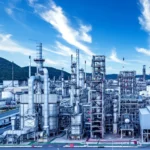Desert Regions Power Petrochemical Industry

Desert Regions Power Petrochemical Industry Growth Amid Sustainability Push in 2025
Dubai, UAE
Desert regions, particularly in the Middle East and North Africa, are pivotal to the global petrochemical industry in 2025, leveraging abundant crude and gas resources to drive production while addressing environmental and social challenges. As protests and market volatility shape the sector, companies in these arid landscapes are investing in sustainable technologies and infrastructure to maintain their competitive edge. Here’s a look at today’s key developments in desert-based petrochemical operations.
Desert Hubs Drive Petrochemical Production
Desert regions like Saudi Arabia and the UAE are at the forefront of petrochemical growth, with the sector projected to drive 18–20% of global crude demand by 2040, according to the International Energy Agency. Today, Saudi Aramco announced progress on its Jafurah project in the Arabian Desert, targeting 2 million metric tons of ethylene production annually by 2027, supported by AI-driven optimization that boosted yields by 7% in 2024. The UAE’s ADNOC, operating in the Rub’ al-Khali desert, is investing $10 billion to expand petrochemical output by 1.4 million metric tons by 2026, capitalizing on low-cost feedstocks. However, a projected 1.7 million b/d crude surplus by early 2026 threatens to push Brent crude prices from $68 per barrel in August to $50 per barrel in Q1 2026, impacting feedstock economics.
Environmental Protests Target Desert Operations
Today, environmental protests disrupted operations at desert-based facilities, with activists in Qatar targeting QatarEnergy’s North Field, a key LNG and petrochemical hub. The protests, driven by concerns over plastic pollution and emissions, delayed production of 50,000 metric tons of petrochemicals, according to industry reports. These actions highlight the sector’s environmental impact, with desert regions contributing to the 400 million metric tons of global plastic waste annually. Companies are responding with recycling initiatives, with BASF announcing a $200 million investment today to produce 600,000 metric tons of recycled plastics by 2028 in desert-based facilities.
Sustainability Through CCUS and Renewables
Desert regions are leveraging their vast landscapes for sustainable petrochemical production. Today, ExxonMobil reported advancements in its CCUS project in the Qatari desert, capturing 2 million metric tons of CO2 annually, with AI reducing costs by 10%. Saudi Aramco’s solar-powered Jafurah facility, launched in 2024, cut emissions by 6% using 50 MW of renewable energy. Global CCUS investments in desert regions reached $10 billion in 2025, but only 45% of executives surveyed by Deloitte prioritize these efforts due to high costs, limiting scalability. Methane reduction, critical in gas-heavy deserts, saw a 7% emissions cut in 2024 using AI-driven monitoring.
Geopolitical and Supply Chain Pressures
Geopolitical tensions in desert regions, particularly the Strait of Hormuz, handling 21% of global LNG, are impacting petrochemical supply chains. The EU’s March 2025 ban on Russian LNG re-exports has driven a 23.6% surge in LNG imports in H1 2025, increasing competition for desert-sourced feedstocks. QatarEnergy’s use of blockchain, reported today, reduced transaction costs by 7%, ensuring supply chain resilience. Companies are investing $3 billion in alternative routes to mitigate disruptions, critical as protests and trade sanctions add complexity.
Technology Enhances Desert Operations
Advanced technologies are boosting efficiency in desert-based petrochemical plants. Today, Sinopec announced a 7% yield increase at its desert facilities in northwest China, driven by digital twins that reduced downtime by 12% in 2024. Industrial Internet of Things (IIoT) sensors are monitoring pipeline integrity in the UAE’s deserts, cutting losses by 5%. In 2025, 50% of desert-based producers are adopting AI and IIoT, saving $2 billion annually. These technologies are vital as the sector navigates a projected crude price decline and competition from low-cost producers.
Community and Workforce Engagement
Desert communities are central to petrochemical operations, with protests amplifying calls for local benefits. Today, TotalEnergies announced a $15 million investment in education and healthcare near its Omani facilities, boosting community approval by 10%. Automation led to 3,000 job cuts in desert regions in 2024–2025, but retraining programs, backed by $100 million in industry funds, are transitioning 2,000 workers to roles in renewables and digital operations by 2027. Women’s representation in desert-based STEM roles reached 18%, supported by initiatives like ADNOC’s Women in Energy program.
Outlook for 2025
- Gas Industry
- Oil Industry







